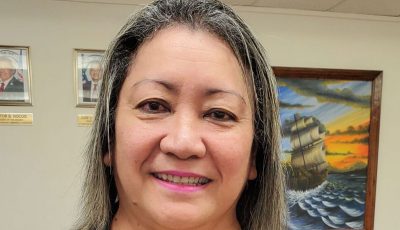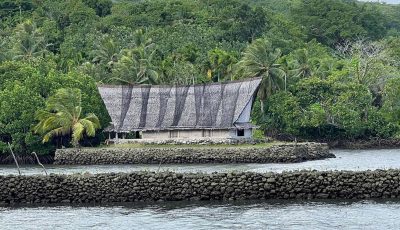Long journey home
The formative years of bipartisan politics here was difficult largely because of the introduction of a new chapter in how the community discusses and disposes of its issues. It eased out the old way of taking commands from the wise man of the village to owning them as members of the community.
The old ways were relegated with the introduction of participatory democracy. We took the leap of faith too! The decibel level is louder but it’s the venue to vent community sentiment in addition to allowing for healthy competition of ideas in island communities.
I’ve been to several of these village meetings, listening to healthy differing views. It was the one venue where I heard timeless wisdom from our elderly. It was their sober and mindful views that fostered calm and unity simultaneously. It came with wisdom!
Through the years we learned the difference between intramural and varsity sports on matters of importance. Call it political maturity or sophistication.
It’s comforting how the more informed and educated folks contribute to help the group move forward on complex issues. With a sense of camaraderie emerged relative ease fulfilling the work of the entire community. At any rate, it is the initial venue to dispose of vital issues of interest doing it the old-fashioned way: indigenous unity!
Island leaders weren’t elected then. The community grooms the naturally gifted to ascend to position of leadership. It’s like knowing and accepting the smartest in the class. He gets 4.0 while you struggle with 2.5 or 1.5 GPA and still boast that you’re smarter than him. It was a long journey since the incipiency of self-government and still a long ways off our destination!
Reintegration: I remember listening to disoriented discussion about reintegration with Guam because of the dollar-an-hour salary. Ours then was about $.16 an hour under the Trust Territory government.
The other side aspired for direct annexation with the U.S. The majority, though, overwhelmed the issue supporting reintegration. But Guam shot it down soundly, ending any and all future discussions. It still is about low wages and salaries, as though history has repeated itself though different in form.
Oops! Today, there are more than 14,000 employees earning poverty and below income. Where did the elected elite miss their bus ride? Isn’t this dependent largely on a healthy economy?
I didn’t know we’re still stuck with the dollar-an-hour debate even after 40-plus years! This time it’s the lack of elasticity of the dollar—poverty income—we have to contend with. But then after 40-plus years talking about the economy, we should have one in place that is growing and sustainable. Guvana Raffy’s SOCA missed it by oceans apart!
Alone: In 1972, we opted for separate negotiations with the U.S. versus being lumped together as a state under the Federated States of Micronesia. Negotiations ensued the agreement approved by the U.S. Congress in 1975. We finally opted out, successfully.
A new arrangement in self-government forced politicians to look beyond provincial politics. It was the beginning of obligatory self-government.
Is there anything else beyond the current arrangement that we wish to secure from our national government? Anything beyond the current arrangement would be wasteful and unrealistic in that the onus of building strong governance is on our side of the court.
Medicaid: The future of Medicaid across the country depends on the results of this midterm election. “For 53 years, Medicaid has served as a safety net for millions of people who needed assistance as their ability to care for themselves declined.
“In 2010, Medicaid’s healthcare role grew with the passage of the Affordable Care Act, which called for the expansion of health coverage to more low-income families. So far, 33 states and Washington, D.C., have expanded the program.
“But Medicaid, Social Security and Medicare often are targeted for cost cutting in times of rising deficits. Medicaid is particularly vulnerable,” says David Certner, AARP’s legislative policy director, “because it services populations such as low-income seniors and people with disabilities, who don’t have as strong a voice.”
“Most people think of Medicare as the health program for older adults and people with disabilities, which it is. But while Medicare covers medicines, tests, doctor visits and hospital procedures, it’s Medicaid that pays to help a frail elderly person get dressed, bathe and eat—either at home or in a nursing facility.”
The CNMI receives around $13 million annually from the feds that helps a lot of indigent (poor) folks here deal with the cost of medical care. It’s an issue we can’t ignore, though it requires a lot of money to ensure its continuity if federal funds are cut completely.



























